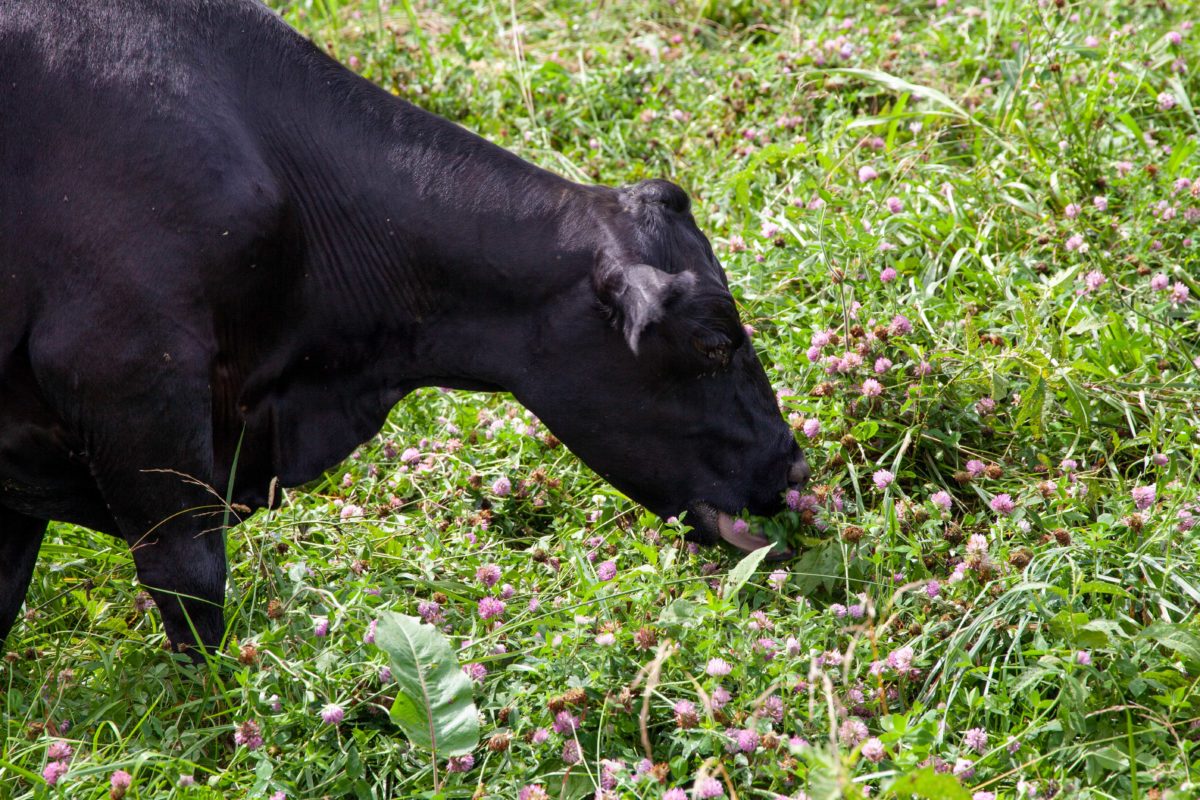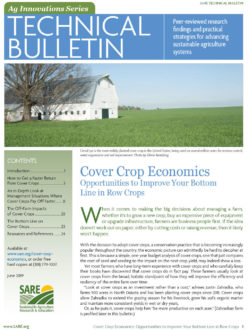
Among the several ways that cover crops can boost profits, grazing them is one of the most likely ways to provide a positive first-year return. Whether grazing cover crops pays back the first year depends on the amount of cover crop growth, the length of the grazing period and the costs for fencing and a water supply, if those are not already in place. Where grazing infrastructure is present, even a modest amount of grazing from cover crops will normally pay for seed costs while also providing some soil improvements. Getting early fall establishment of fast-growing covers such as cereals and/or brassicas (such as turnips, radishes, canola, etc.) can boost your financial return well above cost of cover crop seeding.
Some farmers doing cover crop grazing find they get optimum returns by using intensive grazing management techniques with low-cost, portable electric fencing and regular moves of livestock between paddocks. Daily or near daily moves not only lead to more efficient use of cover crop forage but also reduce potential hoof damage to crop fields. In established no-till or minimum-till fields with good cover crop stands, soil structure combined with the root anchoring ability of the covers helps minimizes any potential issues from the cattle grazing.
Integrating livestock with cover crops can be a major plus for long-term soil health. The urine, manure and saliva from grazing animals has been found to stimulate soil biology. This is not surprising given that our soils, whether prairie or forest, evolved with herbivores impacting the soil biology. In fact, there is some evidence that grazing cover crops, especially where significant biomass is achieved, may be one of the fastest ways of building soil organic matter and soil biology. More research on this is needed, but early on-farm results look promising.
Since many farmers don’t have or want livestock, they may think cover crop grazing does not apply to them. However, they may have family members or neighbors who would be interested in custom grazing their ground, bringing in temporary electric fencing and providing a rental payment that can boost profitability. Some families have found that cover crop grazing can help employ an additional family member on the farm without having to expand crop acres.
How a producer integrates livestock into their operation will affect the economic value they see from grazing cover crops. A cow-calf operator who intends to extend their grazing season in the fall and spring may value cover crops based on the reduced amount of hay they need to buy. A backgrounding operation may focus more on the quantity and quality of the forage, and thus would value cover crops based on daily gains and fed cattle market values. Whether or not a producer intends to graze both in the fall and spring, the seeding rates, available forage, value of hay and amount of selective grazing by livestock will all impact the financial benefit.
Snapshot: The financial impact of grazing cover crops
Cover crops pay off in year one, assuming an annual return of $49.23 per acre from grazing. Estimated returns for corn average $17.87, $50.65 and $67.13 per acre after one, three and five years of planting a cover crop. Soybean returns average $25.68, $49.65 and $59.41 per acre after one, three and five years. (See Table 4 and Table 5 for details.)
The assumed annual return includes assumptions that portable electric fencing is already on hand and water is accessible; costs for installing new fencing or a water supply would delay profit on grazing to year two or possibly longer. Practical Farmers of Iowa, in a detailed on-farm study of cover crop grazing, also found that grazing provided a net profit in year one for each of the farms studied [6].
